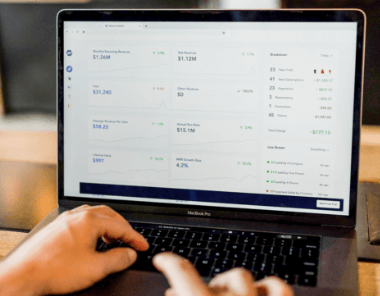Why Goal Setting is Important
Like with a New Years Resolution, setting goals for your business is important to help drive you towards what your team considers success and make informed decisions with how you might do a promotion or what type of new features you have on your platform.
Goal setting leverages investments from your stakeholders – you can ask for that $50,000 to do a brand new marketing campaign but what are the chances of approval if you can’t say what you’re working towards with it? Goal setting provides the context behind why you need that amount and what you’re tracking on after you have it.
Set yourself up for success – create the ability to show progress towards what you’re working towards, and metrics to either confirm it’s working or to show that perhaps you need to think of a new direction. This won’t just help guide your own team, but also other departments.
If you aren’t tracking on it, you aren’t paying attention to it.
What gets measured, gets managed.
– Peter Drucker from his 1954 book titled, “The Practice of Management.”
Keep in mind though that when goal setting, it’s easy to get carried away. Having fewer goals can actually help ensure you have proper focus and attention. That’s not to say you can’t have more if it makes sense with your business, but they should be both trackable and actionable.
Recommended KPIs
To track your goals, it’s good to have some Key Performance Indicators to be able to measure how effective you’re achieving your objective. Think about what inspires you to drive forward on your company, or where you want to see your business going.
If you need help on figuring out what type of KPIs we typically recommend, here are a few recommendations, but adjust the metrics to fit your business needs.
- Revenue
- Number of orders
- Number of visitors
- Conversion rate
- Email statistics
- Average order value
- Promo & Coupon usage
If you don’t already have a place to track these, never fear! We’ve put together a Human Element approved goal-setting scorecard template that you can download Scorecard – Holiday Tracking (more information about utilizing this scorecard at the end of this post!).
Historical Data Analysis
Knowing what kind of KPIs you should track on is an important step, but how do you know what to work towards to make goals that are personalized and achievable for your business?
You might have asked (or been asked) the question “Well, what’s industry standard?” around a number of times in an attempt to keep up with your competitors and remain in the status quo. However, industry standard isn’t always the way to go. While it’s important to have an idea of how the market is doing, it’s more important to look at how your business has performed in the past to get your baseline, or starting point for your KPIs
You want to be doing better than the month or year before. You don’t know what other business are doing, what their budgets are, how they’re spending their money, etc. Focus on what you can control – your own business! If you’re doing better than you were before, and tracking towards your goals, you’ll be heading in the right direction.
So, when setting goals, be aware of the industry, but focus on your businesses’ past metrics to get an idea of what your goals should be for 2019. What did your revenue look like last year? How many email subscribers do you gain or lose month to month? How about your average order value? It may seem like a lot of information to gather if you haven’t previously, but the insight it’ll bring is worth the time. If you need a little more help, we’ve got you – at the bottom of this post we included a downloadable scorecard template you can use to enter in this data and start analyzing how you can be better than you already are.
Where To Get Info
It’s awesome if you are consistently checking on visitors or how your PPC (pay per click) is going, but have you thought of all the ways you can be gathering and analyzing data can help drive your business goals and decisions?
Hotjar
Hotjar is a service that offers heatmaps of where users are clicking and hovering over on specified pages, can take recordings of people using the site, and even has an option to add surveys at specific pages to get more immediate feedback from your user base.
It is incredible for understanding more about your users behavior on the site, and also for monitoring during busy seasons to ensure the sales funnel is working as expected. Especially during periods of high traffic such as Black Friday & Cyber Monday, setting up recordings can provide an additional layer of monitoring that on the chance an issue does occur, it can be more easily diagnosed.
Google Analytics
Of course, Google Analytics is a key component for gathering all the data. When set up correctly, Google Analytics can give you an idea of your revenue, drop off rates, how many visitors you get and at what times, how your ads are going, etc. The information in Google Analytics is endless – having a few key KPIs to track on regularly can help focus the time and energy spent within Google Analytics.
eCommerce Platforms (Magento, BigCommerce, Shopify)
Why not take advantage of the platform you take actual transactions on and look through your reporting there? Most every eCommerce platform should have a set of reports that you can access and download as a business owner that breaks down each order and customer. If you’ve ever done promotions on the site, that will be tracked too on how often they’ve been used, and same for if you use your platform for email marketing.
Email Marketing
Like your eCommerce platform, your current email marketing tool should be able to give you metrics on how many email subscribers you currently have and how often they are engaging with the content you send.
Social Media
Each social media platform has its own set of insights it collects from your audience, such as their age and interests or what day and time they’re engaging with your content most.
Magento Business Intelligence (AKA Magento BI)
Business Intelligence is Magento’s data analysis system that takes information from your eCommerce platform and provides context to help guide business decisions. It’s especially useful because it can sync data from Google Analytics, as well as Facebook Ads, Salesforce, Netsuite, and other platforms, so you don’t have to keep cross-referencing between the systems.
They take this data and display it within a visual dashboard
Opportunities & Pitfalls
While you’re going through the goal-setting process, try to determine your goals before you dive too deep into the metrics. The holiday season is stressful enough, but trying to dig through numerous places to understand your data and performance on top of it can be downright overwhelming. This is especially true if you’re trying to track on every tiny metric that’s available just because you can, without much reasoning on why it makes sense for your business.
Get an understanding of your business goals, and then determine what data points will be helpful in tracking on that and ensuring you are working towards the right numbers. Remember that you aren’t in this alone, and if you need a bit of help or additional insight, it’s a great opportunity to lean on your hosting and development partners to get an idea of what they’ve experienced in the past.
Need a Little Help Organizing this Information?
We’ve handled some of the work for you already with the Human-approved Goal-Setting Scorecard Template. Make a copy to add to your own Google Drive, or download the file to get started tracking on your business goals and metrics.
[fusion_button link=”https://www.human-element.com/app/uploads/2019/09/Human-Element-Goal-Setting-Scorecard-Template.pdf” text_transform=”” title=”” target=”_blank” link_attributes=”” alignment=”” modal=”” hide_on_mobile=”small-visibility,medium-visibility,large-visibility” class=”” id=”” color=”default” button_gradient_top_color=”” button_gradient_bottom_color=”” button_gradient_top_color_hover=”” button_gradient_bottom_color_hover=”” accent_color=”” accent_hover_color=”” type=”” bevel_color=”” border_width=”” size=”xlarge” stretch=”default” shape=”” icon=”fa-arrow-right fas” icon_position=”right” icon_divider=”no” animation_type=”” animation_direction=”left” animation_speed=”0.3″ animation_offset=””]Human Element Goal Setting Scorecard[/fusion_button]



